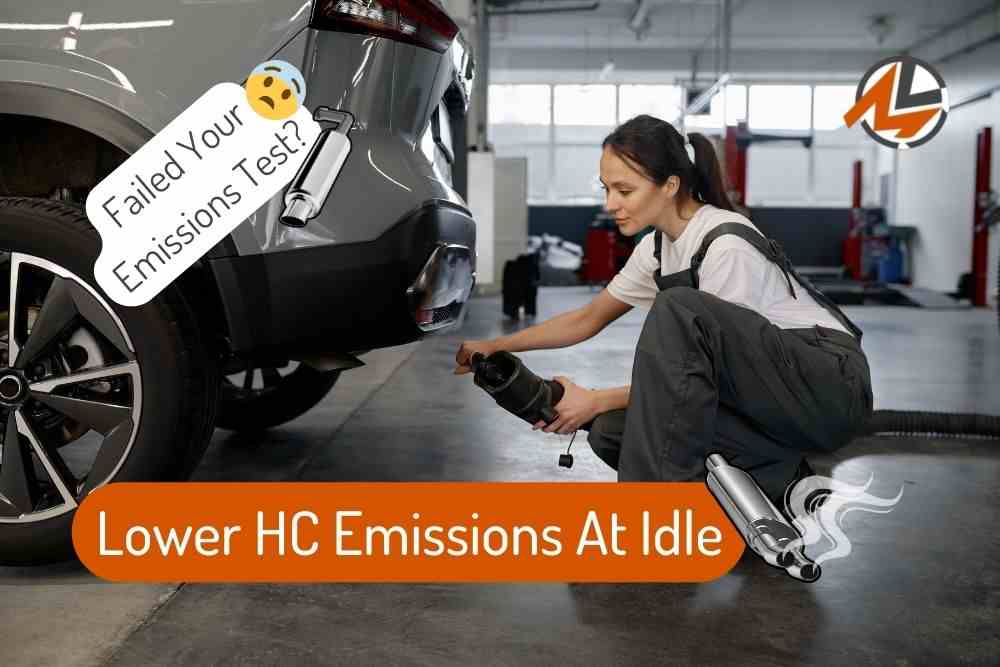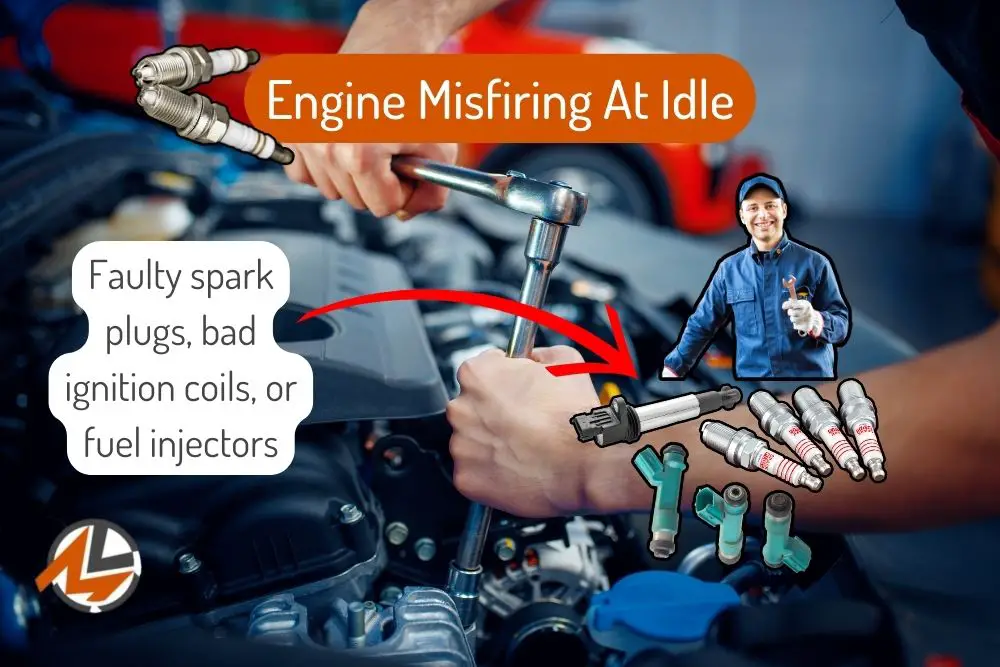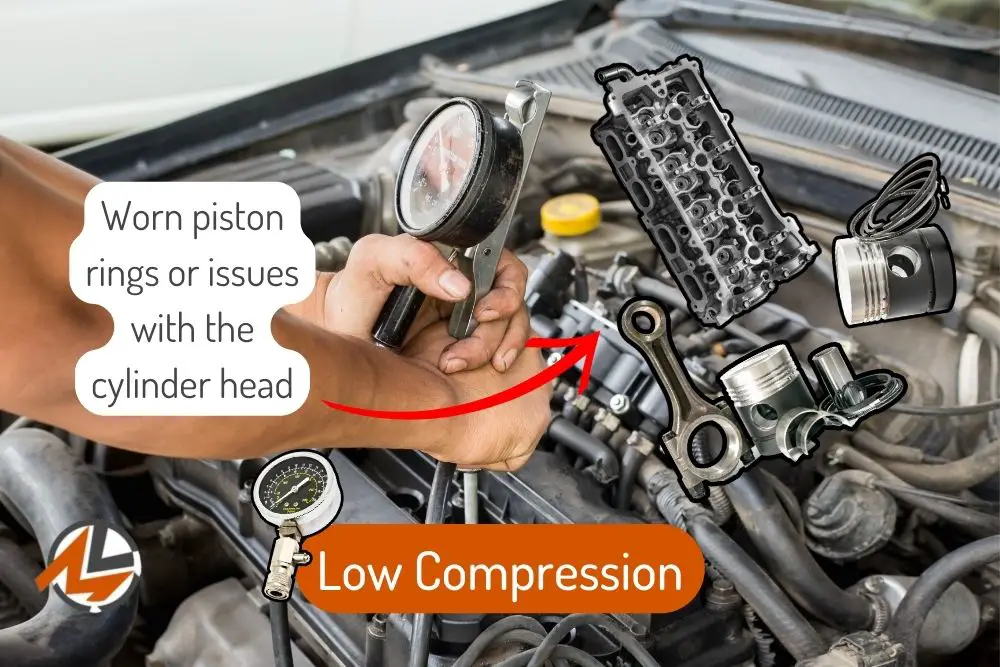As someone who owns and drives mainly old, oft-modified cars, failing emissions tests (and trying to figure out how to lower HC emissions at idle) is something that I’m quite familiar with. So, what can you do about high HC emissions at idle?
One of the most common causes for a failed emissions test, as in my case, is due to high HC (hydrocarbon) emissions at idle. But fear not! There are simple ways to help reduce your car’s HC emissions at idle.
Hydrocarbon Emissions
But first, before we get into figuring out how you can lower your car’s HC (hydrocarbon) emissions at idle and how to pass the emissions test, what are hydrocarbon emissions, anyway?
Well, hydrocarbons are unburned fuel particles that escape from your car’s engine. When these HC particles are released into the atmosphere, they contribute to smog and air pollution.
High HC emissions, especially when your engine is at idle, typically indicate that the combustion process in your engine isn’t as efficient as it should be. Less efficiency entails higher emissions.
Causes Of High HC Emissions
With that in mind, here’s a quick look at the top 7 most common causes and reasons why your car is seeing higher HC (hydrocarbon) emissions at idle. Thus, causing you to fail your emissions test.
Besides the below-mentioned reasons and common causes for high HC emissions at idle, we’ll also look at how to lower HC emissions at idle for each of them (click on each one below to skip to that section):
- Engine misfiring at idle
- Rich fuel mixture
- Vacuum leaks
- Exhaust valve leaks
- Low compression
- Leaking EGR valve
- Fuel supply issues
How To Lower HC Emissions At Idle #1: Engine Misfiring At Idle
Problem: When your engine is misfiring at idle, this is usually due to underlying problems such as faulty spark plugs, bad ignition coils, or fuel injectors that won’t fire at consistent rates, more so at idle.
Solution:
- Step 1: Begin by inspecting the spark plugs. Remove them using a spark plug socket and check for wear or deposits.
- Step 2: If the spark plugs are worn or dirty, replace them with new ones suitable for your vehicle.
- Step 3: Examine the ignition coils for any visible damage or wear. If uncertain, consider using an ignition coil tester to check their functionality.
- Step 4: For fuel injector issues, purchase a fuel injector cleaner and add it to your fuel tank. If the problem persists, consider having the injectors professionally cleaned or replaced.
How To Lower HC Emissions At Idle #2: Rich Fuel Mixture
Problem: An overly rich fuel mixture is often due to incorrect carburetor settings or malfunctioning fuel injection systems, leading to a higher amount of fuel than is necessary to be mixed with air.
Solution:
- Step 1: For carbureted vehicles, locate the carburetor’s mixture screws. These are usually found on the side of the carburetor.
- Step 2: Turn the screws slightly clockwise to lean the mixture. Monitor the engine’s performance and adjust as necessary.
- Step 3: For vehicles with fuel injection, use an OBD-II scanner to check for rich mixture error codes. If found, consider replacing the oxygen sensors or consulting a mechanic for a professional tune-up.
How To Lower HC Emissions At Idle #3: Vacuum Leak
Problem: Cracked, damaged, or disconnected vacuum lines or seals can cause unmetered air to enter the engine, disrupting your engine’s air-fuel balance and AFR (air-to-fuel ratio) mixture.
Solution:
- Step 1: With the engine running, listen for hissing sounds indicating a vacuum leak.
- Step 2: Inspect all vacuum lines and connections visually. Look for cracks, disconnections, or signs of wear.
- Step 3: For a more thorough check, spray carburetor cleaner around potential leak areas. If the engine RPM changes, you’ve located a leak.
- Step 4: Replace or reconnect any damaged or disconnected lines.
How To Lower HC Emissions At Idle #4: Exhaust Valve Leaks
Problem: Worn or damaged exhaust valves or exhaust valve seals may allow the air-fuel mixture to escape during compression.
Solution:
- Step 1: Conduct a compression test. This will help identify if there’s a leak in the exhaust valves.
- Step 2: If leaks are detected, the valves might need grinding or replacement.
- Step 3: Valve grinding is the process of refinishing the surfaces on the valve and its seat to ensure a perfect seal. For this, you’d need a valve grinding kit.
- Step 4: This is done by removing the cylinder head from the engine, and then using a valve spring compressor to remove the valves.
- Step 5: Apply the included grinding compound to the valve face and its seat, and grind away imperfections.
- Step 7: Clean away all the grinding compounds thoroughly and reassemble the engine.
Disclaimer: Valve grinding is a meticulous task that requires precision. If not done correctly, it can lead to major engine damage. If you’re not confident in performing this task, it’s advisable to seek professional assistance.
How To Lower HC Emissions At Idle #5: Low Compression
Problem: This can occur from wear and tear, such as worn piston rings or issues with the cylinder head, leading to inefficient burning of the air-fuel mixture.
Solution:
- Step 1: Use a compression tester to check each cylinder’s compression levels.
- Step 2: If low compression is detected in one or more cylinders, it indicates wear in parts like piston rings or cylinder head issues.
- Step 3: For piston rings, start by removing the cylinder head and the oil pan. Then, remove the pistons from the cylinders. Once the pistons are out, replace the old rings with new ones.
- Step 5: Reassemble the engine, ensuring all parts are correctly aligned and torqued to specifications.
Disclaimer: Replacing piston rings is a complex task that requires a deep understanding of engine assembly. It’s essential to ensure all parts are correctly aligned and torqued to avoid engine damage. If you’re uncertain about any step, consider consulting a professional.
How To Lower HC Emissions At Idle #6: Leaking EGR Valve
Problem: A malfunctioning EGR valve can introduce excessive exhaust gases back into the combustion chamber, diluting the air-fuel mixture.
Solution:
- Step 1: Locate the EGR valve in your engine bay.
- Step 2: Check the valve for signs of damage or clogging.
- Step 3: Test the valve’s functionality by applying vacuum using a vacuum pump. If the valve doesn’t hold vacuum or doesn’t operate, it may be faulty.
- Step 4: Clean the EGR valve with a suitable cleaner or consider replacing it if it’s malfunctioning.
How To Lower HC Emissions At Idle #7: Fuel Supply Issues
Problem: Inconsistent fuel supply due to a clogged filter, failing fuel pump, or impurities in the fuel can affect combustion efficiency.
Solution:
- Step 1: Replace the fuel filter, which is typically located along the fuel line or inside the engine bay.
- Step 2: Listen to the fuel pump when the ignition is turned on. If you don’t hear a humming sound, the pump might be failing. Replacing a fuel pump can be done with the right tools and a guide, but it’s a task that requires caution.
- Step 3: Use clean, high-quality fuel to prevent impurities that can clog the system.
- Step 4: Consider adding a fuel system cleaner to your fuel tank during your next fill-up to clean out any deposits or contaminants.
How To Pass Emissions Test
If you want to guarantee passing the emissions test for your car in the future (once you’ve fixed what’s caused the high HC emissions in the first place), here are some things you could do:
1. Adjust the Ignition Timing at Idle
Fine-tuning the moment the spark plug fires can have a significant impact on emissions. If it’s too advanced or delayed, it can cause higher HC levels.
Use a timing light, and adjust the distributor for optimal timing. Ensure that this is within your car’s specified ignition timing.
2. Adjust the Idle Speed
Some emissions tests permit adjusting the idle speed. If it’s too low, it may lead to incomplete combustion, while too high can waste fuel.
Check the vehicle’s specs for the optimal idle speed range and adjust accordingly using the idle speed screw on the carburetor or the electronic control in modern vehicles.
3. Clean the Carburetors
Over time, carburetors can become clogged with residues that affect performance. Moreover, it causes your engine’s combustion efficiency to drop.
Disassemble and clean all parts of your car’s carburetor with a suitable carburetor cleaning solution, or consider a professional service.
4. Add a Catalytic Converter
This is especially relevant for older or modified cars that don’t have one. Catalytic converters significantly reduce harmful emissions.
Installation should be done by a professional to ensure compliance with local regulations. Adding a catalytic converter is often the easiest way to ensure that you pass emissions tests.
5. Use Ethanol-Blended Fuel
Ethanol burns cleaner and produces fewer emissions. However, not all vehicles are compatible with ethanol-blended fuels. So, make sure beforehand that your car can take ethanol-blend fuels.
Check the vehicle’s manual or consult the manufacturer. If compatible, using a higher ethanol blend can help reduce HC emissions.



